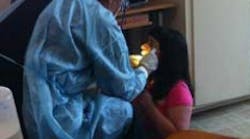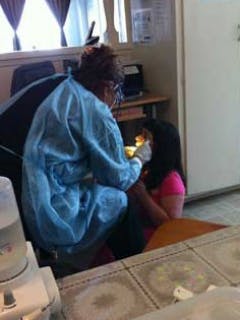Diagnostic assistance available for preventive dentistry
by Shirley Gutkowski, RDH, BSDH, FACEWhat’s in a name? An X-ray by any other name would give as much information, right? An X-ray is one of our top diagnostic tools. Between dentists and dental hygienists, who really needs X-rays to do their job? The answer is: dentists. Dentists discover restorative work to do from X-rays.
Because the laws for licensing practitioners who use ionizing radiation are different across the country, some states have a bigger issue than others. Some states require a license, and the overall scope of dental hygiene includes taking X-rays; however, the dentist views them to make a diagnosis. Even though the 2008 Dental Hygiene Standards of Practice1 suggests dental hygienists expose, process, and interpret dental radiographs, the dentist is called upon as the person in the dental practice with the authority to interpret them. Taking X-rays in a practice that doesn’t have a dentist on-site may imply that the dental hygienist would act as the radiologist, which is clearly out of the scope of dental hygiene practice. Although senior level dental students and dental hygiene students are equal in their ability to interpret radiographs,2 state dental boards often regulate the taking of radiographs only if a dentist can read them.
We must agree that X-rays are mainly a function of disease diagnosis, which can only be managed by a dentist. If we also agree that X-rays are a good way to increase production, we should ask if that’s a good reason to take them.
Does a dental hygiene practice need X-rays? Probably not. Radiographs are not that important to the practice of dental hygiene. If a patient is having a problem with a tooth, they should see a dentist, not a dental hygienist. So what can be used to support a dental hygiene diagnosis? What diagnostic modality can the dental hygienist use to feel confident that his or her hands are not tied, and they can deliver preventive measures that interfere with disease progression, such as sealants, and not make matters worse?
Evolution of fluorescence technology
Dental fluorescence. Fluorescence in dental hygiene applications has been in the news for the last few years. One early use of dental fluorescence was in the DIAGNOdent caries detector. Dentistry has used the technology to drill a smaller hole, as opposed to finding early lesions to actively remineralize. The laser is directed into the pits and fissures of teeth, which stimulates porphyrins from cariogenic bacteria to emit a particular wavelength of light that is read by the wand and quantified by the computer. The patient is engaged, and the clinician knows that the higher the number of porphyrins, the more assured he/she is that the enamel has decayed. When done correctly, the results are repeatable between clinicians, and healing enamel can be monitored.
Shortly after the DIAGNOdent came onto the scene, fluorescence technology emerged in oral cancer detection with ViziLite. Chemiluminescence creates the light source, and the wavelength of light from the light source wand stimulates a fluorescence from the tissue, revealing different tissue types. Velscope is an evolution of fluorescence technology for soft tissue at our disposal to detect cellular changes. The clinician’s eye notices difference in tissue fluorescence.
Fluorescence technology for hard tissue has evolved in biofilm and caries manifestation with Air Techniques’ Spectra Caries Detection Aid. The Spectra uses a larger wand than the DIAGNOdent, directing the initial light wavelength at the entire tooth at once. The blue light starts the fluorescence sequence. The healthy enamel glows green, as does nonpathogenic bacteria. Spectra’s particular wavelength stimulates cariogenic bacteria to glow red to orange/red. It’s even possible to see the pathogenic bacteria glowing red around all types of filling materials.
Dental hygienists use Spectra for a number of preventive treatments, starting with patient education. An excellent example for dental hygiene use is before preparing and monitoring a tooth for sealants. Even X-rays cannot determine minor demineralization within the pits and fissures. An explorer can let a clinician find a stick indicating decay, but that stick may accentuate, stimulate, accelerate, or otherwise alter the weakened enamel in the pits or fissures, making traditional sealant placement tenuous.
For a dental hygienist-led practice, fluorescence technology is necessary for detecting a caries infection — not to determine the need for prosthetic treatment, but to determine which preventive strategies to apply. Now that we fully understand how enamel breaks down and how dental hygiene practice can heal microscopic damage to enamel, X-rays are obsolete in a dental hygiene practice — at best they are a diagnostic aid for end-stage disease.
The other benefit of this advanced technology is the second step, a flick of the finger. The Spectra can determine the health of the enamel on the broad surfaces of the teeth, in pits and fissures, and around dental prostheses (fillings).3 The image created looks like Doppler radar images. Damaged enamel is viewed in different colors reflecting the amount of mineralization. This is the kind of information a dental hygienist is looking for before or after preparing the tooth for the sealant, for example, or evaluating a sealant at subsequent appointments. The device is so sensitive that early breakdown, before the common white spot infection is visible to the eye, can be treated with currently available products on the market, such as Recaldent.
A tooth with damaged enamel could be a candidate for a glass ionomer sealant material. Use of a smart polish in the air polisher can help remineralize the enamel before etching or placing a sealant material. The Spectra can help the prevention provider to learn if sealing the proximal surface of the tooth is indicated too.
There are two ways to seal an at-risk proximal surface where teeth are adjacent to each other. One is to use a resin to infiltrate the lesion. In certain circumstances, a glass ionomer (GI) such as Triage may be a better option. GI arrests a lesion on the proximal surface of the tooth it’s placed on and protects the adjacent tooth too. As described in the book, The Purple Guide: Confronting Caries,4 the teeth are separated and a drop of Triage is smeared on the lesion. With a traditional X-ray, the damage may not be visible at all, especially if the teeth are slightly overlapped or if the film is distorted in any dimension. Or the damage may not become visible until the window for healing the lesion is past.
Overcoming diagnostic shortcomings
A diagnosis of decay as detected by an X-ray is not a full diagnosis. In order to make a better diagnosis, the dentist must determine the cause of the decay, which is impossible by X-ray alone. The assumption has been that biofilm caused the lesion. X-rays have limitations in that they focus only on hard tissue, and the job of the radiologist is to make an educated judgment of the variations of gray on the resultant image. So the diagnosis made from the image is a partial diagnosis.
A medical radiologist seeing a lesion on a mammogram reports the lesion to the attending physician who actively seeks identification of the lesion. The diagnosis is made after biopsy, and treatment starts based on the findings of the biopsy. In the dental hygiene profession, we have the luxury of finding the causes of the lesion and acting on them.5
Although the result of a periodontal infection can be seen on a radiograph, it, too, is late-stage diagnosis, and bone loss can be a result of other problems, including occlusion. Newer technologies are available to detect the infection before bone loss appears. And bone levels can be estimated by probing with a periodontal probe, although that needs an update too. In the practice of dental hygiene, there is no need for radiographs to locate bone height. Other bone abnormalities, cysts, and masses are in the realm of the dentist.
In this changing world, it’s important to remain open to ideas and finding ways to do things better. With the use of fluorescence technology, and the realization that X-rays are for dentists, the dental hygiene practice can save money by avoiding the costs of a traditional X-ray setup. The benefit of using Spectra hardware as described is its interoperability with office and practice software. Saving and sharing gathered information with another practice is easy. Dental hygienists may do their entire scope of practice without the expense of taking and managing radiographs.
Shirley Gutkowski, RDH, BSDH, FACE, is a clinical dental hygienist. Her experience and free thinking have made her a popular international speaker and award-winning author. She is the author of many books, chapters, and articles to support dental hygienists, and she is a career coach at CareerFusion. Her books can be purchased through www.rdhpurpleguide.com. Information on CareerFusion is at www.Careerfusion.net.
References
- www.adha.org/downloads/adha_standards08.pdf
- J Dent Hyg. 2003 Fall;77(4):246-51.
- Int J Dent. 2010;2010:958264.
- www.rdhpurpleguide.com
- Community Dent Oral Epidemiol. 1996 Jun;24(3):182-6.
- www.ada.org/2760.aspx#guide
CDT explanation for radiographs
The Current Dental Terminology 2011-2012 (CDT) book lists codes for reporting dental services. The dentist is called upon as the person in the dental practice with the authority to interpret X-rays. The beginning of each section in CDT has a general description for all codes in the section.
The first to be noted is the name of section, “Radiographs/Diagnostic Imaging (including interpretation).” The general description states, “Should be taken only for clinical reasons as determined by the patient’s dentist ...” The American Dental Association and the Food and Drug Administration, as the regulators of radiation, put together guidelines for the selection of patients for radiographs.6
On the first page of the radiographic guidelines, it clearly states, “Radiographs can help the dental practitioner evaluate and definitely diagnose many oral diseases and conditions.” These guidelines state on page 8, “A thorough clinical examination, consideration of the patient history, review of any prior radiographs, caries risk assessment, and consideration of both the dental and general health needs of the patient should precede radiographic examination.”
The insurance carriers are beginning to ask more. They want to see a reason for taking the radiograph and the result of the radiograph. If documentation does not indicate reason and result, carriers are not paying for claims and have even asked for the return of funds already paid. Timeliness is not a reason. The idea someone is “due” is not supported in current literature.
— submitted by Patti DiGangi, RDH, BS
Past RDH Issues








